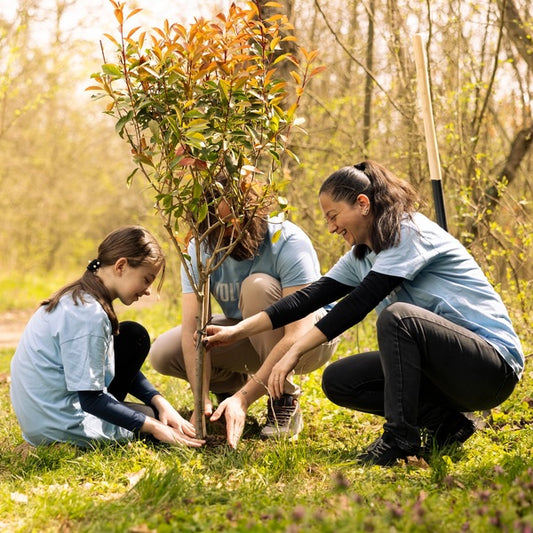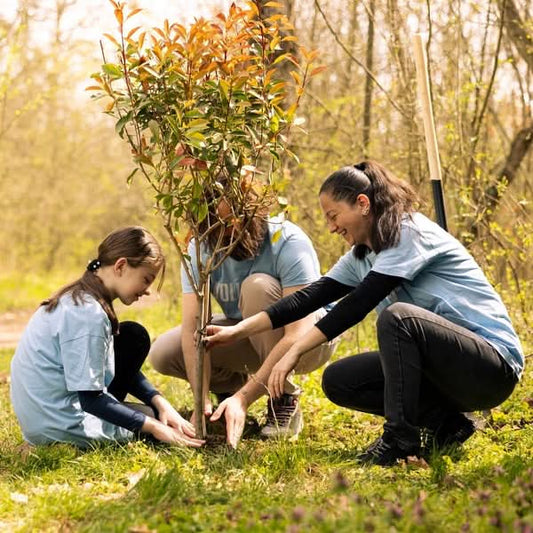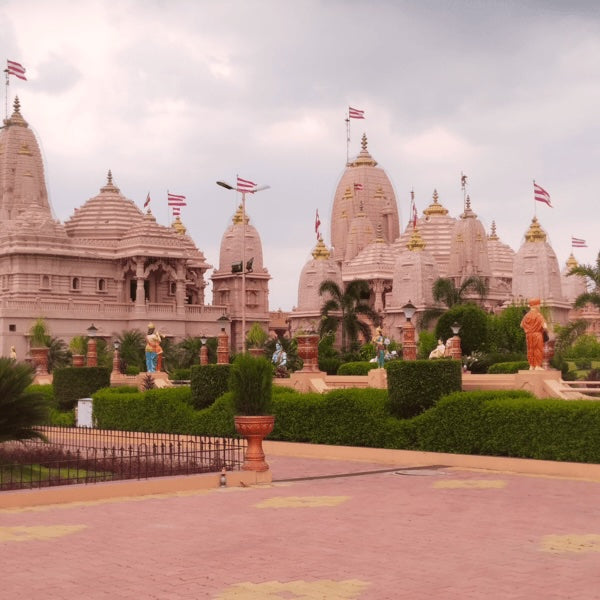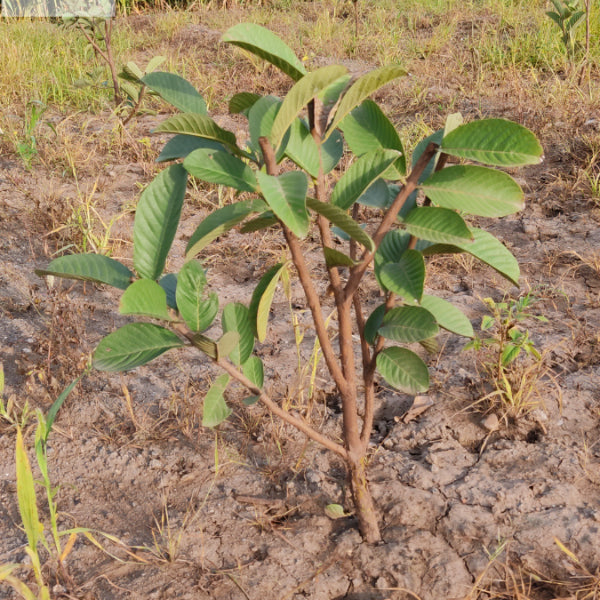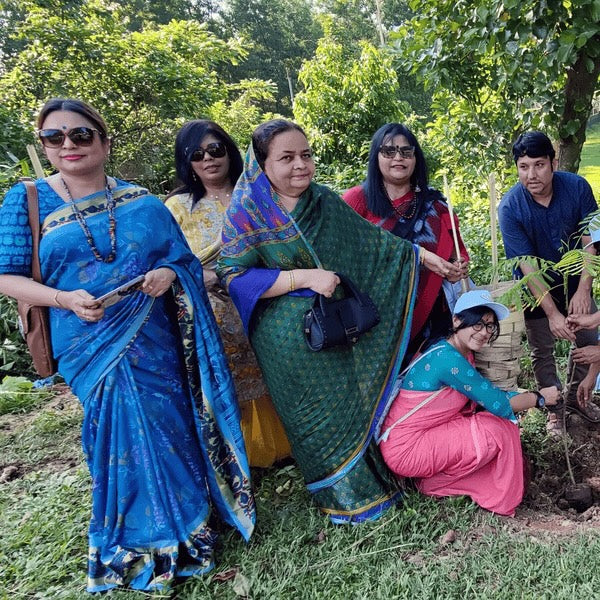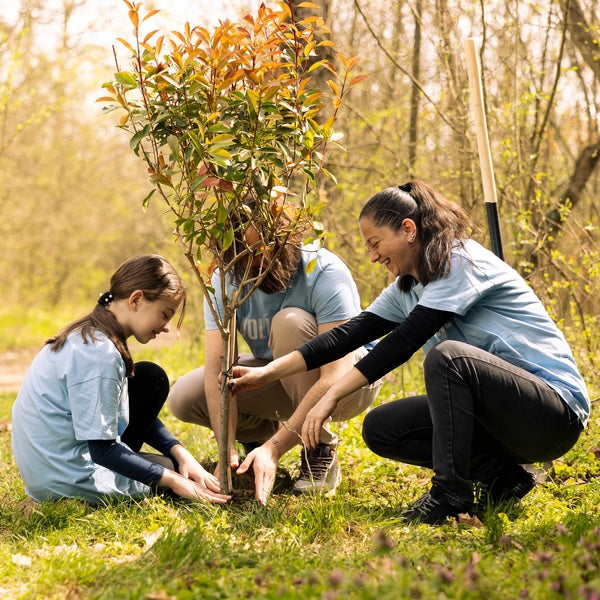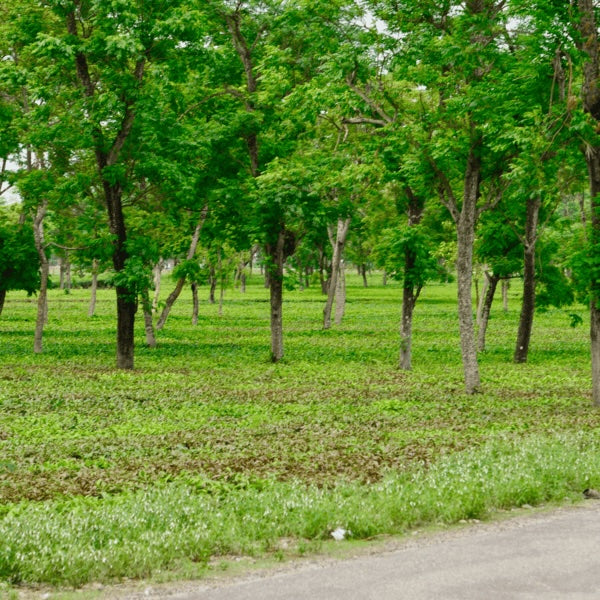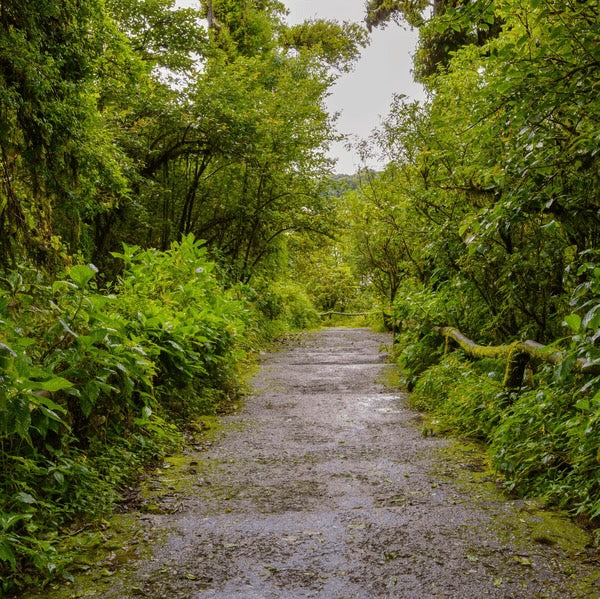

In a world where cities are rapidly expanding, often at the cost of green spaces and sustainability, there emerges a visionary whose dedication to revitalizing urban landscapes is transforming communities. Majora Carter, an environmental justice advo Read more
Trending
Trees for Corporates
Majora Carter: The Urban Revitalization Visionary Creating Greener Cit
In a world where cities are rapidly expanding, often at the cost of green spaces and sustainability, there emerges a visionary whose dedication to revitalizing urban landscapes is transforming communities.
Majora Carter, an environmental justice advocate and urban revitalization expert, has spent her career using innovative solutions to create more sustainable, equitable, and green urban environments.
In this blog, we'll explore her journey, the importance of urban revitalization, and how she’s making a lasting impact on cities across the world. 🌎✨
The Birth of a Green Revolution: Who is Majora Carter? 🤔
Born and raised in the Bronx, New York, Majora Carter became a powerful voice in the fight for environmental justice in urban communities.
Growing up in a neighborhood riddled with pollution, limited green spaces, and environmental neglect, Carter experienced firsthand the consequences of industrialization on urban populations.
This sparked her passion for transforming cities and improving the lives of those who have been overlooked by mainstream environmental movements. 🌱
Carter’s efforts have helped redefine how urban communities think about sustainability. Rather than viewing green spaces as luxury amenities for affluent neighborhoods, she’s worked tirelessly to make the case that everyone, especially underserved communities, deserves clean air, green spaces, and healthy environments. 🌿🌳
Majora Carter's Vision for Greener Cities 🌆
Carter’s approach to urban revitalization centers on creating sustainable and livable cities. Her work focuses on improving public health, creating green jobs, and designing cities where people can thrive.
One of her most notable contributions is the concept of “green urbanism,” a model of urban development that integrates environmental sustainability with social equity and economic opportunity. 💡
She often refers to this holistic approach as “environmental justice,” highlighting the need for policies that address the needs of marginalized communities.
Through her work, Carter has demonstrated that environmental improvements not only enhance the quality of life but also offer economic benefits through job creation and increased property values. 💼
The Hunts Point Project: A Game-Changer for the Bronx 🔧
One of Carter’s most well-known accomplishments is her work with the Hunts Point area in the Bronx, one of New York City’s most underserved neighborhoods. Known for its heavy industrialization, Hunts Point faced severe environmental degradation, including air pollution, lack of green spaces, and poor access to healthy food. 🚧
In 2001, Majora Carter founded Sustainable South Bronx (SSBx), an environmental nonprofit aimed at improving the living conditions of residents by implementing sustainable practices. One of her flagship projects was the Hunts Point Environmental Justice Initiative, which worked to transform this industrial wasteland into a model for sustainable urban revitalization. 🚜🌿
The project successfully cleaned up polluted sites, transformed abandoned spaces into parks, and encouraged the construction of energy-efficient buildings. It also provided green jobs to local residents, helping to lift the community out of poverty and create opportunities for sustainable livelihoods. 💚
Green Jobs and Economic Growth 💼🌍
Majora Carter’s belief in the power of green jobs has been central to her urban revitalization work. She recognizes that the transition to greener cities not only improves the environment but also drives economic growth. Carter has championed the creation of jobs in the renewable energy, waste management, and construction sectors—industries that are poised to lead the way in the future economy. 🌱
By training residents in these green industries, Carter has demonstrated how urban revitalization can lead to both environmental and economic benefits. For instance, her work in Hunts Point helped residents gain skills in green construction and energy efficiency, preparing them for well-paying jobs in the growing sustainability sector. 🌿💰
The Power of Green Spaces in Urban Areas 🌳🏙️
As cities grow, green spaces often take a backseat to development, with industrial parks and commercial buildings taking priority over parks and recreational areas. However, Carter has made a compelling case for the importance of green spaces, not just for their aesthetic value but also for their ability to improve public health. 🌳🏞️
Studies have shown that access to green spaces can reduce stress, improve mental health, and encourage physical activity.
In addition, trees and plants help reduce air pollution, absorb carbon dioxide, and mitigate the urban heat island effect. By incorporating more green spaces into urban design, Carter’s vision of a greener city becomes one that promotes both environmental and public health. 🌍💪
The Intersection of Environmental Justice and Equity ⚖️🌱
What sets Majora Carter apart from many other urban planners and environmentalists is her unwavering commitment to equity.
She has always argued that environmental improvements must be accessible to everyone, particularly those who have historically been excluded from the benefits of clean air, green spaces, and environmental protections. 🌿
Her work emphasizes that the fight for the environment cannot be separated from the fight for social justice. In her view, creating greener cities is about more than just sustainability—it’s about ensuring that everyone, regardless of their income or background, has access to the resources they need to live healthy, fulfilling lives. 🌏💖
Global Impact and Recognition 🌎🏆
Majora Carter’s impact extends far beyond the Bronx. Her innovative approach to urban revitalization has inspired cities and communities around the world to rethink how they design and develop urban spaces. Her work has garnered numerous accolades and awards, including recognition from the United Nations and the National Audubon Society. 🏅
Her voice continues to resonate as she speaks at international conferences, advocating for policies that support sustainable urban development. Carter’s influence has led to a growing movement of “green cities” around the world, where urban growth is balanced with environmental responsibility. 🌍🎤
Majora Carter’s Legacy: Changing Cities, Changing Lives ✨
As a thought leader in urban revitalization, Majora Carter’s legacy is firmly rooted in the transformation of cities into more sustainable, equitable, and green spaces. Through her work, Carter has demonstrated that urban development need not come at the cost of the environment or public health. 🌿💚
Her projects have revitalized neighborhoods, improved access to green spaces, created green jobs, and inspired others to follow her lead. As cities around the world continue to grow, Carter’s vision provides a roadmap for urban revitalization that prioritizes people and the planet. 🌍🌱
In conclusion, Majora Carter’s work is a shining example of how one individual can change the world by challenging the status quo and fighting for a better, more sustainable future for everyone. Through her vision, hard work, and dedication to social justice, Carter is helping to create a world where cities can thrive while keeping the environment and its people at the heart of their development. 🌍💚
You may also like
Corporate Plantations
Urban Revitalization
Urban revitalization is a process where neglected or declining areas are rejuvenated through infrastructure improvements, sustainable development, and community engagement. Majora Carter has pioneered the transformation of urban environments, showing how green spaces, sustainable practices, and local involvement can turn underdeveloped neighborhoods into thriving, eco-friendly communities.
Environmental Justice
Environmental justice addresses the fair distribution of environmental benefits and burdens among all people, regardless of race, income, or social status. Majora Carter has been a strong advocate for this cause, ensuring that marginalized communities, particularly in cities, have access to clean air, green spaces, and a healthy environment—promoting sustainability for all.
Green Urbanism
Green urbanism combines sustainable design principles with urban development to create cities that minimize environmental impact. It emphasizes energy-efficient buildings, clean energy sources, green spaces, and waste reduction. Majora Carter’s focus on green urbanism has led to more eco-friendly communities, where sustainable practices are embedded into the fabric of city life.
Sustainable Communities
Sustainable communities balance economic, environmental, and social factors to ensure long-term prosperity for future generations. Majora Carter’s approach to sustainable communities emphasizes the need for equitable access to green spaces, job opportunities, and community-driven urban development to foster thriving, eco-conscious neighborhoods.
Green Jobs
Green jobs refer to employment opportunities in sectors like renewable energy, energy efficiency, waste management, and sustainable construction. Majora Carter’s initiatives in urban revitalization have helped create green job opportunities, particularly for residents of underserved communities, allowing them to gain skills in sustainable industries while supporting environmental goals.
Environmental Impact
Environmental impact refers to the effect human activities have on the natural environment. This can include pollution, deforestation, climate change, and loss of biodiversity. Majora Carter’s work in revitalizing urban areas seeks to reduce negative environmental impacts by promoting sustainability, cleaner industries, and better urban planning to benefit both people and the planet.
Urban Planning
Urban planning involves designing and organizing cities and communities in ways that are both functional and sustainable. Majora Carter’s work redefines urban planning by focusing on environmental sustainability and social equity, emphasizing green infrastructure, public spaces, and community-driven development that supports the health and well-being of urban residents.
Community Engagement
Community engagement is the process of involving local residents in decision-making, particularly when it comes to issues that directly affect their lives. Majora Carter’s success in urban revitalization stems from her emphasis on community involvement, ensuring that residents have a voice in shaping their environment and the opportunities they want to see in their neighborhoods.
Environmental Advocacy
Environmental advocacy involves championing policies, practices, and initiatives that protect the environment and promote sustainability. Majora Carter has been a powerful environmental advocate, pushing for cleaner air, green spaces, and sustainability in urban areas, while also addressing issues of social justice and environmental racism.
Green Infrastructure
Green infrastructure refers to the network of natural systems and features—such as trees, green roofs, wetlands, and parks—that help cities manage stormwater, reduce pollution, and improve residents' quality of life. Majora Carter’s work focuses on integrating green infrastructure into urban planning to improve environmental conditions and make cities more resilient to climate change.
Social Equity in Urban Development
Social equity in urban development ensures that all members of a community, regardless of their socioeconomic status, have access to the resources, opportunities, and benefits that come from urban development. Majora Carter advocates for inclusive and equitable development practices that prioritize underserved communities, ensuring they have a say in shaping sustainable and thriving cities.
Resilient Cities
Resilient cities are those that can adapt to and recover from environmental, social, and economic challenges, such as climate change, natural disasters, and inequality. Majora Carter’s approach to urban revitalization aims to build resilient communities that can withstand adversity through sustainable practices, environmental justice, and inclusive development strategies that benefit everyone.
FAQ
What is Majora Carter known for?
Majora Carter is renowned for her work in urban revitalization, particularly in transforming neglected neighborhoods into sustainable, green spaces. She’s a champion of environmental justice, advocating for underrepresented communities and providing them with the resources they need to thrive in healthier, greener cities.
What is urban revitalization?
Urban revitalization refers to the process of reinvigorating declining or neglected urban areas by improving infrastructure, boosting local economies, and creating green, sustainable spaces. Majora Carter has been at the forefront of this movement, showing how communities can become more eco-friendly and equitable through thoughtful urban planning.
How did Majora Carter contribute to green cities?
Majora Carter contributed by transforming urban spaces into greener, more sustainable places. She integrated green infrastructure like parks, green roofs, and tree planting into urban areas, creating healthy environments that promote ecological balance while addressing social and economic challenges in underserved neighborhoods.
What is environmental justice?
Environmental justice is about ensuring that all communities, particularly disadvantaged ones, have equal access to a healthy environment. Majora Carter has been a vocal advocate for this, focusing on improving the environment and reducing pollution in underprivileged areas, ensuring they have the same opportunities to thrive in clean, green spaces.
What are green jobs?
Green jobs involve work that contributes to preserving or restoring the environment. These can include jobs in renewable energy, energy efficiency, and sustainable construction. Majora Carter has worked to create these kinds of opportunities, particularly in marginalized urban communities, helping residents access employment while supporting environmental goals.
How does Majora Carter support social equity in urban development?
Majora Carter advocates for the inclusion of marginalized communities in the urban development process, ensuring they have access to sustainable living conditions, green spaces, and opportunities for economic advancement. Her approach is centered around creating equitable solutions that address both environmental and social justice.
What role does green infrastructure play in urban revitalization?
Green infrastructure uses natural systems like trees, rain gardens, and wetlands to manage water, reduce pollution, and enhance the beauty of urban areas. Majora Carter’s projects emphasize green infrastructure as a key component in urban revitalization, improving the quality of life and resilience of cities to climate challenges.
Why is community engagement important in urban revitalization?
Community engagement ensures that local residents have a voice in shaping their neighborhoods. Majora Carter emphasizes this by involving communities in the revitalization process, making sure their needs and desires are met. It also empowers people to take ownership of their surroundings, leading to more sustainable and successful outcomes.
What is the impact of urban revitalization on the environment?
Urban revitalization can significantly reduce environmental degradation by implementing sustainable practices such as tree planting, clean energy, and waste reduction. Majora Carter’s efforts have proven that revitalizing cities with green spaces helps improve air quality, supports biodiversity, and creates eco-friendly urban environments for all to enjoy.
How does Majora Carter address climate change through urban development?
Majora Carter addresses climate change by promoting green infrastructure, sustainable building practices, and renewable energy within cities. Her work helps cities adapt to climate impacts, like extreme weather, by making them more resilient and sustainable, ultimately contributing to climate change mitigation in urban environments.
What is the significance of Majora Carter’s work on green spaces?
Majora Carter’s emphasis on green spaces is significant because it addresses the environmental and social impacts of urban areas. By creating accessible parks, community gardens, and green roofs, she ensures that urban dwellers have access to nature, improving mental and physical health while combating pollution and enhancing biodiversity.
How do green cities contribute to overall well-being?
Green cities contribute by improving air quality, reducing heat islands, promoting physical activity, and providing mental health benefits. Majora Carter’s urban revitalization initiatives have shown that when cities embrace nature and sustainability, residents experience a higher quality of life and greater environmental awareness.
Most Popular
Connect with us
-
👥 Corporates
If you are looking for:
- 🌲 Tree Plantation Events
- 📊 CSR Projects
📧 corporate@growbilliontrees.com
📞 +91 9699723523
💬 +91 9325931304 WhatsApp (Only)
🕒 Mon - Sat | 10am - 7pm IST
-
🧩 Tree Plantation NGOs
If you are looking for:
- 💰 Financial Assistance
- 🤝 Operational Support
📧 support@growbilliontrees.com
📞 +91 9699723523
💬 +91 9325931304 WhatsApp (Only)
🕒 Mon - Sat | 10am - 7pm IST
-
🌼 Individuals
If you are looking for:
- 👥 Group Tree Plantation Drive
- 🌳 Bulk Tree Plantation
📞 +91 9699723523
💬 +91 9325931304 WhatsApp (Only)
🕒 Mon - Sat | 10am - 7pm IST



